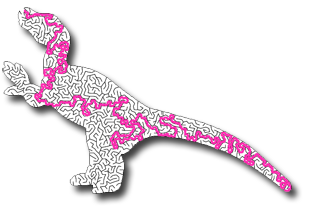Wonderment Rank
March 1st, 2012 The other day, I idly wondered about the band-aids or surgical tape visible on Michael Jackson’s fingertips. I took out my smartphone, and started typing in the query “why did michael jackson wear bandages on his fingers“. As I typed the first few words, the search box filled with a slew of Google search suggestions:
The other day, I idly wondered about the band-aids or surgical tape visible on Michael Jackson’s fingertips. I took out my smartphone, and started typing in the query “why did michael jackson wear bandages on his fingers“. As I typed the first few words, the search box filled with a slew of Google search suggestions:
Why did michael jackson die?
Why did michael jackson turn white?
Why did michael jackson change his nose?
Why did michael jackson bleach his skin?
etc…
It occurred to me that the number of questions like these would be higher for some celebrities, like Michael Jackson, than for others. I decided to try to measure this, so I wrote a little script that measures the “Wonderment Rank” of various people and things.
You give the script a word or phrase, such as “michael jackson” or “kittens”, and it constructs a series of partial search queries:
why did ____
why does ____
why do ____
how come ___
why didn’t ___
why doesn’t ___
why don’t ___
It then counts the total amount of Google search traffic for all these partial phrases, using this undocumented API and reports the results. Wonderment Rank is reported as a single number, which represents millions of searches.
For the record, here is the Wonderment Rank of Michael Jackson, along with a few other celebrities.
| whitney houston | 2393.62 |
| steve jobs | 1112.22 |
| the beatles | 1344.29 |
| lady gaga | 1095.69 |
| michael jackson | 960.31 |
| justin bieber | 621.47 |
| angelina | 176.97 |
| jack black | 119.30 |
| ben franklin | 50.82 |
| davy jones | 0.40 |
| sacha baron cohen | 0 |
As you can see, the recently deceased tend to score highly (except for Davy Jones). Some celebrities, such as Sacha Baron Cohen, score nary a blip, which leads me to believe that Google has some kind of arbitrary cutoff in reporting results.
The results (and my methodology) suggest that Wonderment Rank is strongly correlated to overall search popularity. It’s not the same thing, however. Consider kittens. Google Trends reveals that “kittens” have roughly twice the search traffic of “jack black”, but kittens merit a relatively low wonderment rank of 21. Yes they are cute and playful, but not exactly mysterious.
| kittens | 21.80 |
| puppies | 134.74 |
Celebrities and kittens aren’t the only things people wonder about. They also wonder about politics.
| republicans | 2286.87 |
| democrats | 1277.82 |
| politicians | 1612.73 |
| romney | 4374.55 |
| ron paul | 2320.61 |
| gingrich | 2110.03 |
| obama | 1379.45 |
| santorum | 733.16 |
And we all wonder about existential questions. We wonder about the motivations of God, and about Jesus. We wonder about life, death, taxes, and why do birds suddenly appear?
| life | 9238.58 |
| jesus | 6199.19 |
| god | 4560.73 |
| death | 2247.20 |
| tax,taxes | 1813.87 |
| birds | 1145.98 |
Men wonder about women. Women wonder about men, but not to the same degree. As a man, I expected women to score more highly, but apparently, I was wrong:
| men | 10774.63 |
| women | 6900.09 |
Parents wonder about their kids:
| kids | 12749.90 |
| boys | 10196.22 |
| girls | 8862.12 |
| babies | 3068.72 |
And people wonder about anybody, anyone, someone, and nobody:
| no one | 14135.55 |
| anyone | 11386.79 |
| nobody | 2663.10 |
| anybody | 4845.46 |
| someone | 3743.05 |
For the nerds in the audience, here is the perl script I wrote to measure wonderment rank, and here is a version I made in ruby.
Over the next few days, I’ll post a few more results.
UPDATE: A few days after I wrote this, Google stopped providing search-query counts in their suggest API. This change makes this metric much less precise, although the API can still be used to detect some level of interest.
EDIT: I corrected the spelling of Sacha Baron Cohen – thanks Clive!
Wau!
February 13th, 2012
One of the wonderful mathematical notebook videos from Vi Hart. This one contains a curious puzzle – can you identify Wau?
Sheet Music for “Being There” soundtrack
February 2nd, 2012I first saw the Peter Sellers movie “Being There” in 1979, and fell in love with Johnny Mandel’s two piano pieces on the soundtrack. For years, pre Internet, I didn’t know what the pieces were. Although they sounded like classical piano music, they are not credited in the film, there is no soundtrack album, nor sheet music available. Finally, some time in the 90s, I heard Erik Satie’s Gnossiennes #4 and #5, which they are derived from, and recognized them immediately. I learned the Satie pieces, but then when I saw the movie again, I realized that Mandel’s versions of the Gnossiennes differ significantly from the originals. Mandel’s version of Gnossienne #4, “The Room Upstairs” can be heard in this clip on YouTube, starting around 2:40.
While Satie’s Gnossienne #4 maintains an ambient glasslike stasis throughout, Mandel’s “The Room Upstairs” contains some more straightforward harmonies, giving it a stronger emotional impact, suitable for a film score. Mandel’s version of Gnossienne #5, “Goodbye Louise”, which you can here in the end credits, introduces some Joplin-like motifs that aren’t present in the original. At the risk of offending purists, I think Mandel’s melody lines are more appealing, as well.
I eventually tracked down a decent MIDI arrangement of “The Room Upstairs”, by an unknown arranger, here. There is also a good recording of the two piano pieces from the film on Stephen Edward’s album, Piano Music from the Movies, which also contains some other great piano recordings of obscure film pieces, all available as MP3s from Amazon.
Using these source materials, I was finally able to make sheet music versions of the “The Room Upstairs”, and “Goodbye Louise”, which I thought I’d share. I haven’t completely finished marking all the phrasing, but there’s enough here for a competent pianist to work with.
Perplexible
February 1st, 2012 David Millar, of the excellent puzzle site The Griddle, has launched a new collaborative puzzle site called Perplexible. The intent is to provide a forum for diverse puzzle authors to post new creations. I’ve posted an unusual Slitherlink there, and hope to post more unique puzzles, in the future.
David Millar, of the excellent puzzle site The Griddle, has launched a new collaborative puzzle site called Perplexible. The intent is to provide a forum for diverse puzzle authors to post new creations. I’ve posted an unusual Slitherlink there, and hope to post more unique puzzles, in the future.
I occasionally get emails from puzzle constructors, who want me to publish their new puzzles. If you are one of those people, consider posting it on Perplexible.
Happy Puzzle Day!
January 29th, 2012Happy National Puzzle Day!
 The Jerry Slocum Mechanical Puzzle Collection is now online, featuring images from the collection of over 34,000 mechanical puzzles. This Dutch puzzle shoe from 1790 contains a hidden snuff compartment.
The Jerry Slocum Mechanical Puzzle Collection is now online, featuring images from the collection of over 34,000 mechanical puzzles. This Dutch puzzle shoe from 1790 contains a hidden snuff compartment.
via MetaFilter
Dinosaur Mazes are here!
January 27th, 2012 I’ve added two new collections of Dinosaur mazes to the puzzle collection, which are great for kids.
I’ve added two new collections of Dinosaur mazes to the puzzle collection, which are great for kids.
Each collection contains 50 booklets, with 12 mazes per booklet. Within each booklet, the mazes start out easier, and then get progressively harder.
If you’d like to see mazes in other shapes, let me know!
Flickr Magick
January 11th, 2012In the first few years of Flickr‘s existence, I made a lot of interesting composite images, using large quantities of Flickr photos, Perl, and the ImageMagick library. A few of these images have historical interest, illustrating the rapid growth of both Flickr and YouTube. This slideshow shows a few of these images, and provides descriptions of each slide.
Many of the techniques used to produce these slides can be found in my book, Flickr Hacks.
Enjoy!
It takes 17 clues to make a Sudoku
January 10th, 2012The science journal Nature reports that a mathematician has proven that it takes 17 clues to make a Sudoku.
Gary McGuire of University College Dublin showed this in a proof posted online on January 1st (apparently he wasn’t partying on new year’s eve). This means that sudoku puzzles with 16 or fewer clues do not have a unique solution.
Lunch in the USA
January 8th, 2012This is a Visualization of traffic on my Wheel of Lunch website. The wheel is often accessed around lunch time in the US, to find local restaurants. It only works in the US because it was easy to get working with ZIP codes, and I’m lazy.
This visualization shows the ZIP Codes that are being searched, over time, over a few days last December.
As each day progresses, the traffic tends to travel from right to left, starting in the eastern seaboard and ending in Hawaii.
You’ll notice a persistent number of hits that appear to be emanating from Fort Walton Beach, Florida. They all come from a single ZIP Code: 32547. This stumped me at first. I thought it might be a bot, but when I looked at the logs, I saw a bunch of frequent hits, from various IP addresses, with no real pattern to them. Searching “Wheel of Lunch 32547” on Google, I discovered that this ZIP Code is associated with the entry for “Wheel of Lunch” on the StumbleUpon service. So those 32547 Florida hits mostly correspond to folks hitting the site from StumbleUpon, which is a significant source of traffic for the Wheel.
Remember: The Wheel knows where you live. Do not taunt the Wheel!

